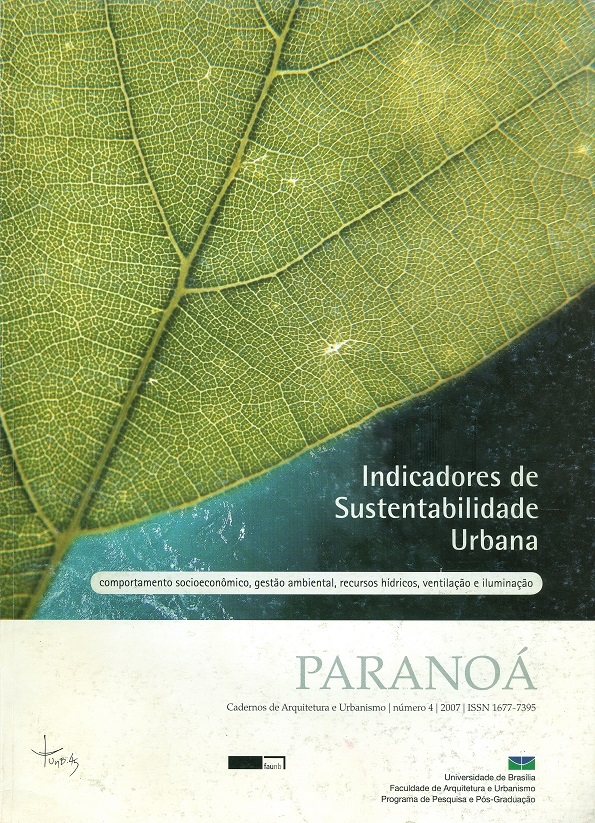Construção de indicadores de eficiência hídrica urbana: desafio para a gestão ambiental urbana
DOI:
https://doi.org/10.18830/issn.1679-0944.n4.2007.12104Keywords:
Ecological management of water, Environmental criteria, Intra Urban sustainability Indicators, Water efficiencyAbstract
The low density urban sprawl results in watertighting a significant part of the hydrographic units, the decrease of the soil absorption capacity and the increase of water consumption in habitational units, lead to distortions in the movements of the natural water flow of the basins. On the other hand, high population density areas have a smaller permeability. Therefore, conciliating the issues of population density with the one of hydrologic cycle is one of the key challenges for urban planning. Thus, studies of instruments for environmental urban management are needed, among which we can highlight the "Indicators". The existing Brazilian environmental urban indicators are related to the water supply, and sewage system of a portion of the population contemplated by it as well as the quality and quantity of water. They don't consider the amount of existing resources in order to maintain a reasonably good functioning of the hydrologic cycle indicating the percentage of watertight areas within the hydrographic unit and the effects to the ecosystems. Aiming to contribute to this discussion, the present paper analyses the principles that coordinate the joint actions ”” draining, water supply, sewage system, urban cleaning, solid residues management, land use and environmental legislation ”” which might touch the different types of zoning systematically though a study of the principles of ecological management of the water cycle and of the environmental criteria adopted for the future implementation of Directive Plans of Urban Drainage (Pianos Diretores de Drenagem urbana PDDUs) in order to build the intra urban water efficiency sustainability indicators.
Downloads
Downloads
How to Cite
Issue
Section
License
Autores que publicam nesta revista concordam com os seguintes termos:
- Autores mantém os direitos autorais e concedem à revista o direito de primeira publicação, com o trabalho simultaneamente licenciado sob a Licença Creative Commons Attribution que permite o compartilhamento do trabalho com reconhecimento da autoria e publicação inicial nesta revista. http://creativecommons.org/licenses/by/4.0
- Autores têm autorização para assumir contratos adicionais separadamente, para distribuição não-exclusiva da versão do trabalho publicada nesta revista (ex.: publicar em repositório institucional ou como capítulo de livro), com reconhecimento de autoria e publicação inicial nesta revista.
- Autores têm permissão e são estimulados a publicar e distribuir seu trabalho online (ex.: em repositórios institucionais ou na sua página pessoal) a qualquer ponto antes ou durante o processo editorial, já que isso pode gerar alterações produtivas, bem como aumentar o impacto e a citação do trabalho publicado (Veja O Efeito do Acesso Livre).















